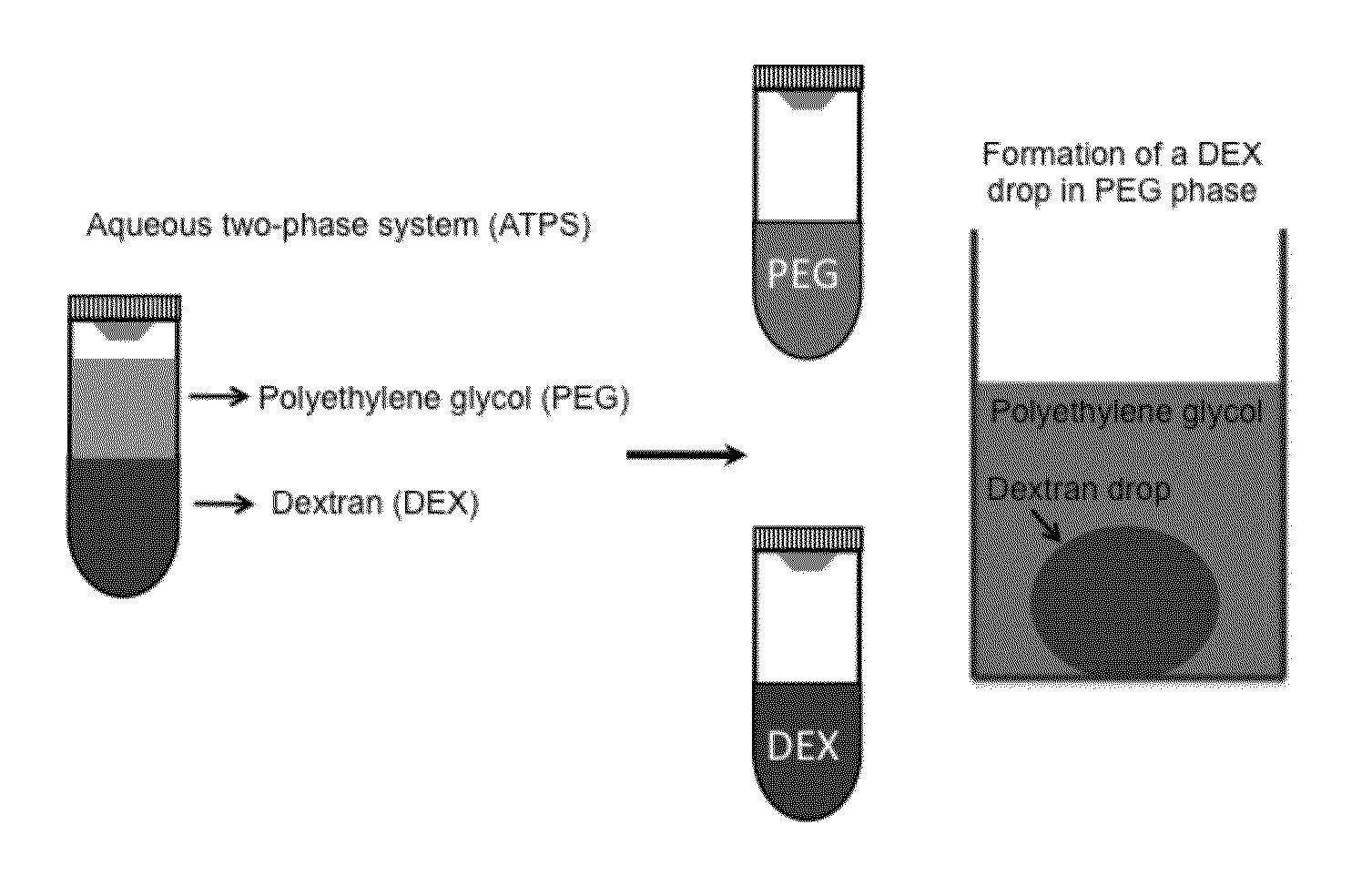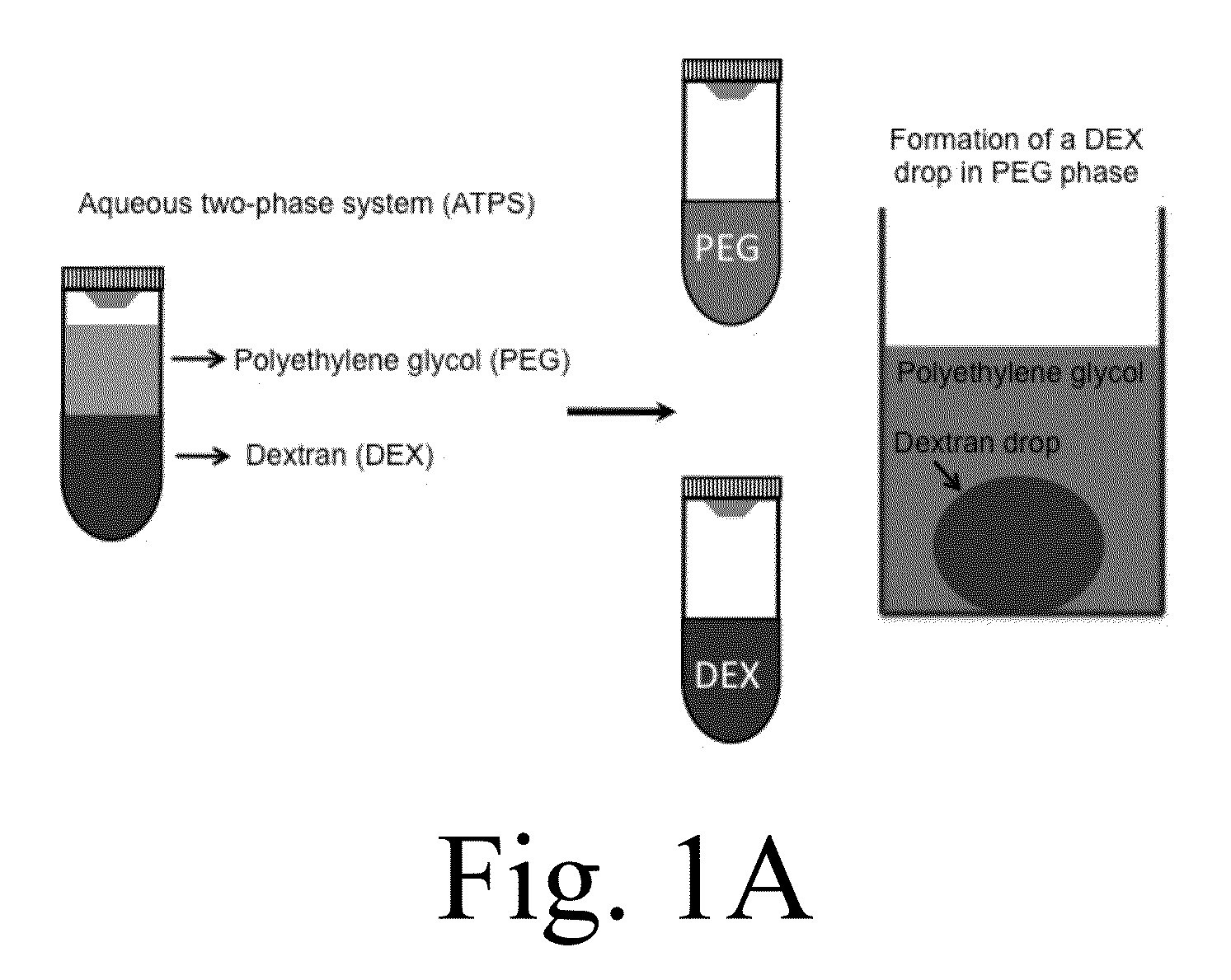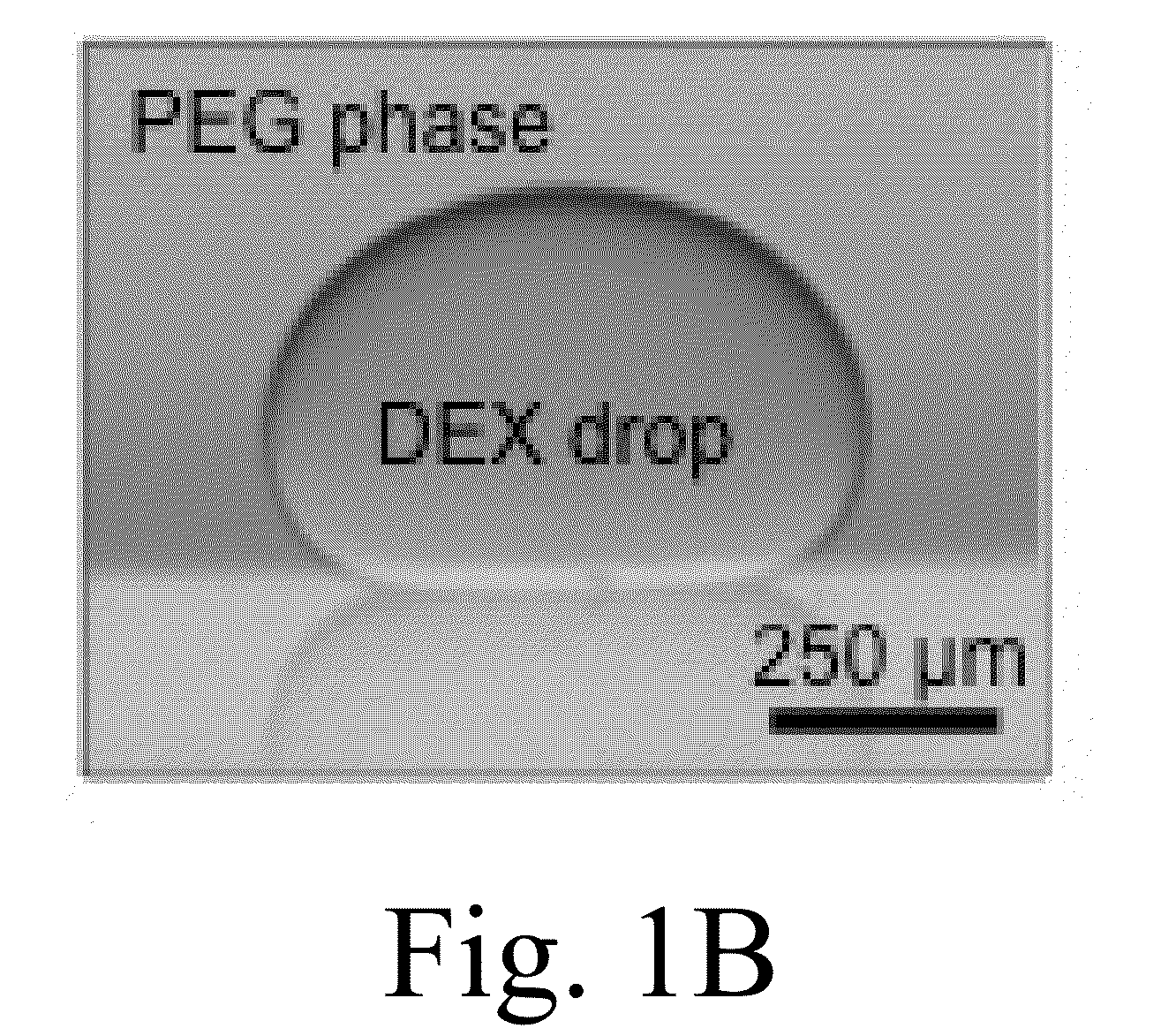Engineering individually addressable cellular spheroids using aqueous two-phase systems
a technology of aqueous two-phase systems and spheroids, which is applied in the field of three-dimensional cell aggregates or “ cellular spheroids”
- Summary
- Abstract
- Description
- Claims
- Application Information
AI Technical Summary
Benefits of technology
Problems solved by technology
Method used
Image
Examples
examples
[0057]The Example 1 was prepared using a two-component cell culture media. Component 1 contains 5% (w / w) polyethylene glycol (PEG, Mw: 35,000) and component 2 contains 12.8% (w / w) Dextran (DEX, Mw: 500,000). When mixed, these two components segregate and form two immiscible phases that can be separated (FIG. 1). First, the PEG phase is loaded into wells of a well plate (destination plate) and this plate is placed on the work surface of a robotic liquid handler (FIG. 2). Then cells are harvested from a culture dish, mixed with the DEX phase at a 1:1 volumetric ratio to reduce DEX concentration to 6.4% (w / w), and loaded into a second plate (source plate). This plate is also placed on the work surface of the liquid handler. Pipette tips are mounted onto the dispense head of the liquid handler (FIG. 3) and are immersed into the source plate to load a defined volume (˜0.3 microliters) of the cell suspension in DEX phase. After retraction from the source plate, pipette tips are lowered in...
PUM
| Property | Measurement | Unit |
|---|---|---|
| spheroid diameter distribution | aaaaa | aaaaa |
| spheroid diameter distribution | aaaaa | aaaaa |
| volume | aaaaa | aaaaa |
Abstract
Description
Claims
Application Information
 Login to View More
Login to View More - R&D
- Intellectual Property
- Life Sciences
- Materials
- Tech Scout
- Unparalleled Data Quality
- Higher Quality Content
- 60% Fewer Hallucinations
Browse by: Latest US Patents, China's latest patents, Technical Efficacy Thesaurus, Application Domain, Technology Topic, Popular Technical Reports.
© 2025 PatSnap. All rights reserved.Legal|Privacy policy|Modern Slavery Act Transparency Statement|Sitemap|About US| Contact US: help@patsnap.com



